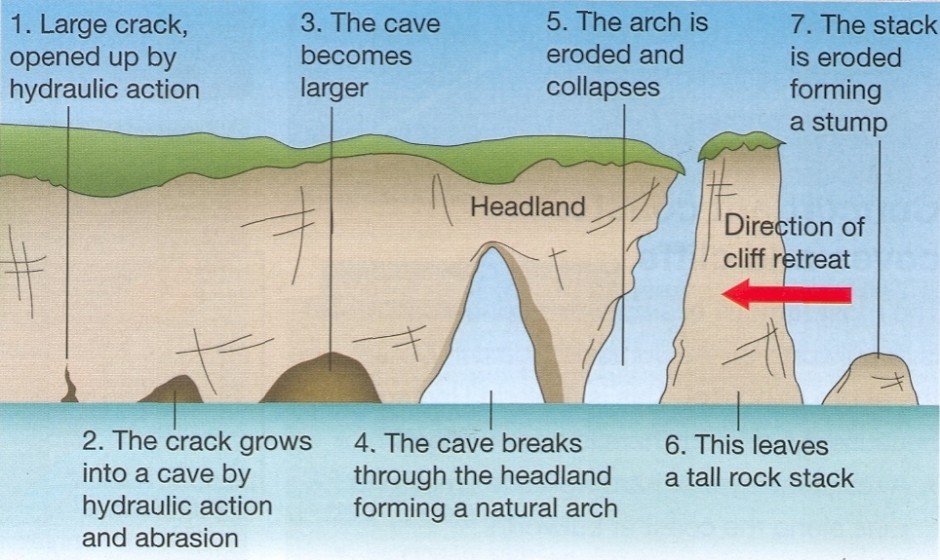Étretat is a coastal region in northern France, well known for its stunning geological landscape. Particularly the headland you see here.

“The chalk cliffs of Étretat” by Chiara Arrighi, distributed by the EGU under a Creative Commons licence.
Headland erosion is perhaps one of the best known processes in coastal erosion, where a crack in the headland is opened and enlarged by hydraulic abrasion. Continued wave action causes the widened crack or cave to break through the headland and form an arch. As erosion continues, the arch collapses, leaving behind a stack (or needle) that erodes down to its base to form a much smaller stump. There are some great examples of other coastal processes describes in The British Geographer.
But that’s not all there is to Étretat, the chalky cliffs are composed of several layers, clearly distinguishable in Arrighi’s photo. These chalk layers are of varying hardness and can be clustered into three main strata: the lowest is a light, fine, stratified chalk aggregate, rich in foraminifera; the middle stratum is a compact chalk layer with beds that are tens of metres thick, and the uppermost stratum is composed of chalk nodules that, like the lowest stratum, is rich in foraminifera.
These strata provide insight into how the chalk of the region was laid down: the fine strata would have been a calcareous ooze, deposited by gentle currents and the nodular material would have formed as small “bullets”, before accumulating more calcareous material as they are transported and redeposited elsewhere. The sediments that now make up the Étretat chalk sequences were subject to several episodes of deformation and slumping before cementing to form the layered cliffs you see above.
References:
Dercourt, J. and Paquet J. (1985). Sedimentary Facies. Geology Principles and Methods, pp. 195-206.
Bromley, R.G. and Ekdale A.A. (2006) Mass transport in European Cretaceous chalk; fabric criteria for its recognition. Vol. 34, pp.1079-1092.
Imaggeo is the EGU’s online open access geosciences image repository. All geoscientists (and others) can submit their images to this repository and since it is open access, these photos can be used by scientists for their presentations or publications as well as by the press and public for educational purposes and otherwise. If you submit your images to Imaggeo, you retain full rights of use, since they are licensed and distributed by the EGU under a Creative Commons licence.


Robert Carlson
The town of Etretet sits in something looking to me like an amphitheater. Was it formed by differential erosion or was a river involved? Clearly differential erosion caused some of the bays I saw, but I wouldn’t think it would produce the gentle slope coming into town.
I found it a fantastic place to visit and I have spent a couple of afternoons searching the internet for explanations for geologic aspects I noticed. For the most part, I found them. Thanks, Robert
John Rehm
The base of the cliffs are so clean. Apparently, when a great piece falls the townspeople come with their carts and take it away. That is concrete down there right? It looks like a road.